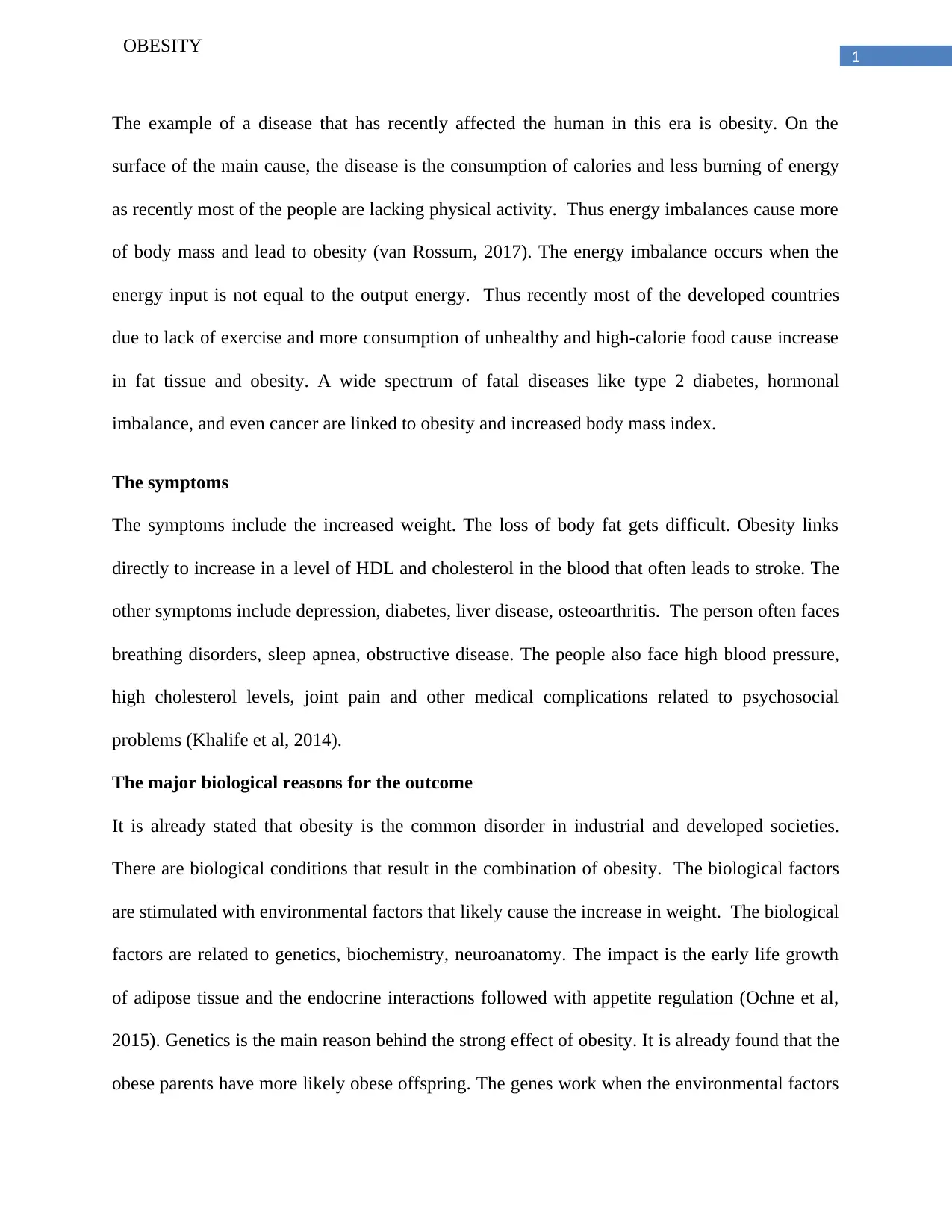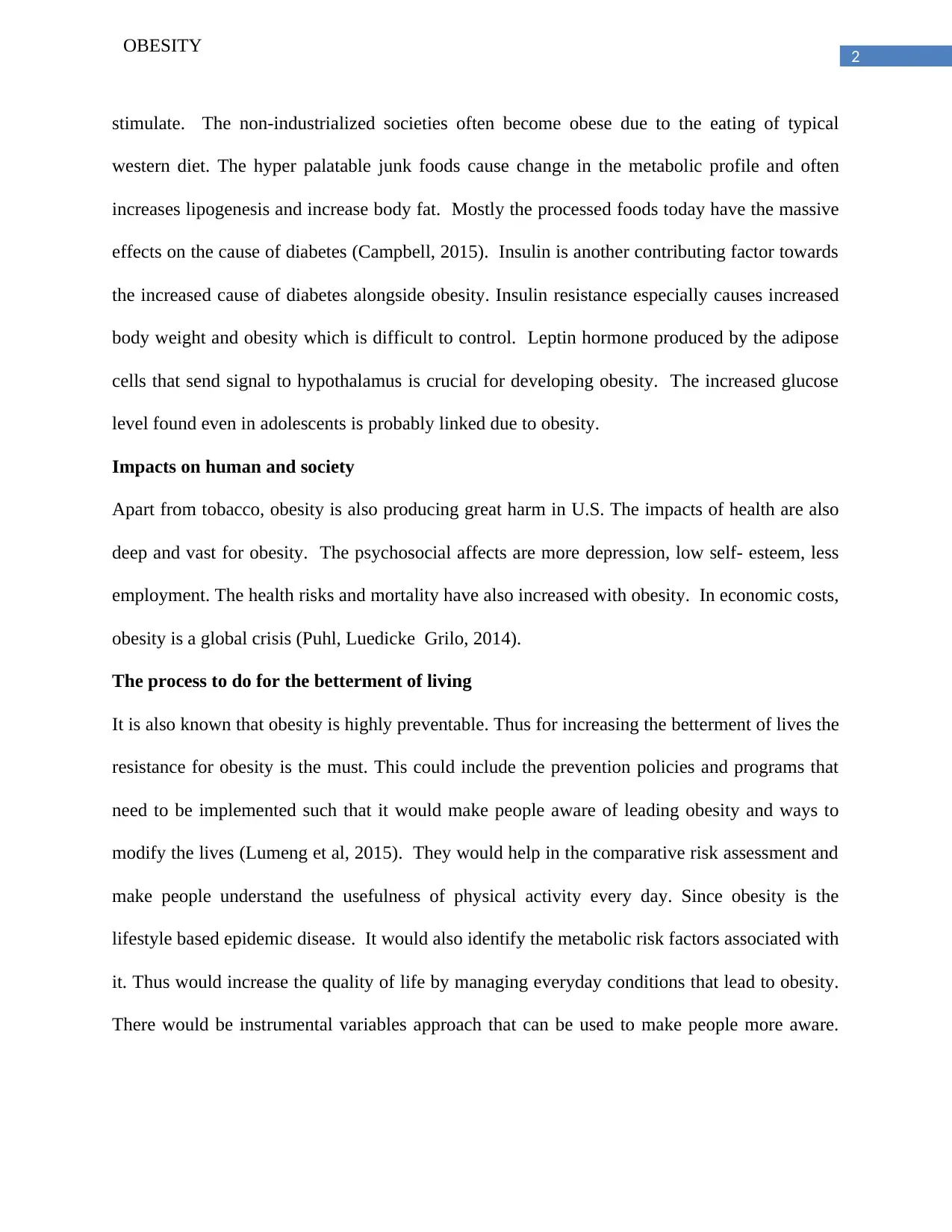The Global Impact of Obesity: Biological, Social, and Economic Effects
VerifiedAdded on 2020/02/24
|5
|1008
|106
Essay
AI Summary
This essay provides a comprehensive overview of obesity, examining its causes, symptoms, and far-reaching impacts. It begins by defining obesity and highlighting its association with energy imbalances resulting from lifestyle factors such as poor diet and lack of physical activity. The essay then delves into the various symptoms associated with obesity, including increased weight, difficulty losing body fat, and links to serious health conditions such as type 2 diabetes, cardiovascular issues, depression, and sleep apnea. The biological reasons behind obesity are explored, including genetic predispositions, hormonal influences like insulin and leptin, and the impact of environmental factors on appetite regulation and metabolism. Furthermore, the essay discusses the significant impacts of obesity on individuals and society, encompassing health risks, psychosocial effects, and economic costs. Finally, it emphasizes the preventable nature of obesity and highlights the need for intervention strategies, prevention programs, and lifestyle modifications to improve public health outcomes.
1 out of 5












![[object Object]](/_next/static/media/star-bottom.7253800d.svg)